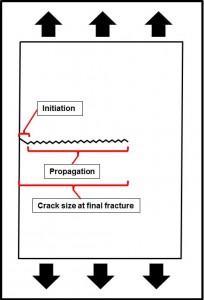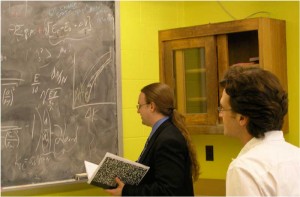In collaboration with John Deere, Iowa State University materials engineers developed a new method to quickly and accurately predict fatigue crack growth in metals – a costly engineering problem that is responsible for loss of human life.

Fatigue ultimately caused the collapse of the I-35W Mississippi River Bridge in Minneapolis, Minnesota that killed 13 people and injured 145 on August 1, 2007.
Stress from several decades of daily traffic produced cracks in the bridge’s supports, weakening them until it collapsed.
“Fatigue is deadly because there is little or no warning that the metal will break until it does,” says Scott Beckman, who is an associate professor of materials science and engineering at Iowa State.
To prevent such scenarios, researchers perform fatigue property testing on metals to predict fatigue crack growth rate and determine when the metals will fail. But fatigue testing can take months and is very expensive.
Seeing an opportunity to improve the process, Eric Johnson, a senior staff engineer at John Deere, started searching for new methods that could deliver faster predictions without compromising accuracy.
And his search led him to Iowa State.
Alumni connections
Iowa State is a John Deere Partner University, but Johnson is no stranger to ISU.
He graduated from Iowa State with his bachelor’s in metallurgical engineering (1999), and his master’s (2002) and doctorate (2013) in materials science and engineering.
Johnson is also formerly acquainted with Beckman, who had graduated the same year from Iowa State with a B.S. in ceramic engineering (1999).
Later on, Johnson would return to his alma mater for a collaborative project to study metal fatigue.
Iowa State, John Deere collaboration
In 2010, Johnson approached Beckman with a three-year project to predict the fatigue behavior of a metal without having to do expensive fatigue property testing.

Also wanting to make it an educational experience, they brought Peter Huffman – Beckman’s graduate student – aboard to lead the project.
During the school year, Huffman pursued his doctoral degree at ISU and interned at John Deere over the summers.
“While at Deere, he did not directly work on his project, but through his summer experience he gained a lot of information on the industrial application of fatigue and met a lot of experts in the field,” said Johnson, who was Huffman’s supervisor at the Deere internship.
In the end, Huffman developed a method to predict fatigue crack growth rates in metals that is quantitatively accurate and uses a minimal amount of data. This study was awarded the Henry O. Fuch’s student award for research in fatigue, in April 2014.
“Using our method, I can look at somebody else’s fatigue testing data, and using only the stress and strain behavior, I can calculate what the fatigue crack growth rate in a material should be. It’s a very accurate process,” said Huffman, who recently received his Ph.D., and now works at John Deere.
Now instead of months, a prediction may only take a few hours. With these details more readily available, those in industry can integrate this method into the design process, resulting in materials that are safer, cost less and have an overall better performance.